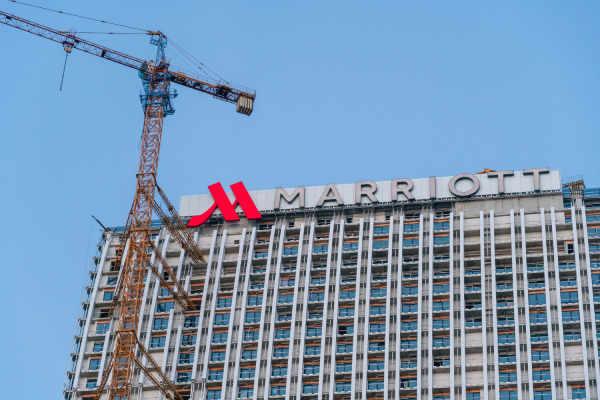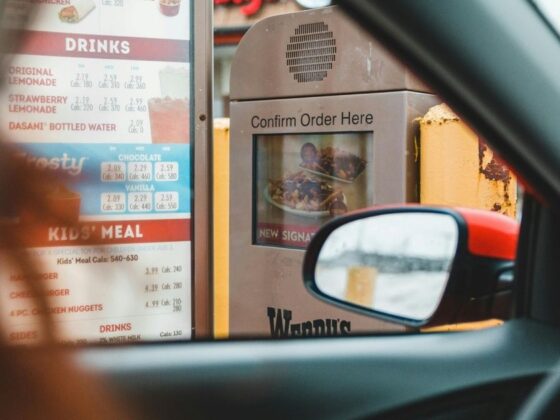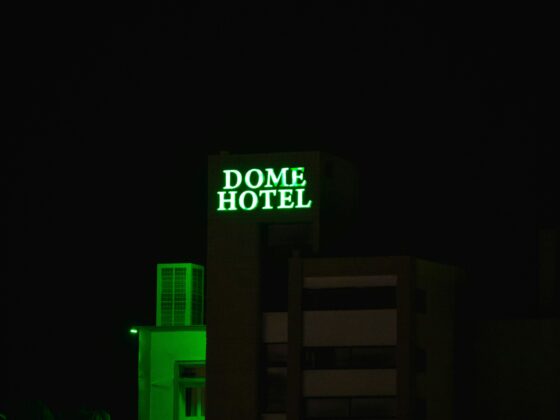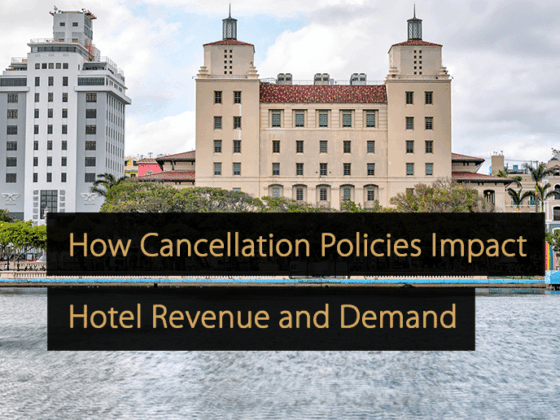Not that your memory needs to be jogged, but COVID-19 brought the hotel industry to its knees—closures, layoffs, debt headaches, a host of issues. What you may not recall is that China, through its zero-COVID policy that used strict lockdowns and community-wide testing to try and mitigate transmission (it has since been deemed a failure), was the first country to show a bounce-back in hotel performance.
In summer 2021, STR observed: “Travel in China has quickly rebounded in both the leisure and business travel segments. Sure, performance declines have occurred during lockdowns, but rebounds have quickly followed, and through the first half of 2021, hotel performance has remained pretty much near normal based on the market’s historical trends.”
That was then, this is now. As a Truist note put it: “China is experiencing ‘revenge travel’ fatigue following the re-opening a year ago. It wrote that in relation to Marriott International’s second-quarter earnings, which, on a global scale, were good, minus Mainland China, where revenue per available room declined roughly 4% in the quarter, “as macroeconomic pressures led to softer domestic demand,” said Marriott International President and CEO Tony Capuano.
China is Marriott’s second-largest market and any fragility there ripples through the entire system. It’s weight that much that Marriott has guided down its full-year RevPAR outlook. “As we look ahead to the full year, we are narrowing our global RevPAR range to 3% to 4% growth, largely due to anticipated continued weakness in Greater China,” Capuano said, adding that it expected negative RevPAR growth in China for the rest of the year.
“We expect a continuation of current weak demand and pricing trends in the region, with a third quarter anticipated to see the most meaningful RevPAR decline, as outbound travel accelerates during summer holidays,” said Leeny Oberg, CFO and EVP of development for Marriott International. “The impact of the change in our outlook for Greater China has a disproportionate impact.”
Marriott performance beyond China was solid. RevPAR globally in the second quarter rose nearly 5%, average daily rate increased around 3% and occupancy reached 73%, up about 150 basis points compared to the same time last year. RevPAR in the U.S and Canada was up around 4% YOY, while Asia Pacific, minus Mainland China, showed strong RevPAR growth at 13%, led by Japan, where the “Land of the Rising Sun” saw its RevPAR rise 21% YOY.
Group business continues to be a standout for Marriott and the collective hotel industry. It comprised 24% of worldwide room nights in the second quarter for Marriott and “remains the strongest customer segment,” Capuano said, but did note the expectation for softness in group business in the fourth quarter due to the Presidential election. “We knew there was an election this year and what we’ve seen is historical softness. But when you look back over prior election cycles, we tended to see a little bit of group softness the week of the election. Given the unique attributes of this election cycle, we’re seeing that bleed into the week after the election, as well.”
Leisure transient, which accounted for 43% of worldwide room nights in the quarter, posted a 2% rise in RevPAR. Meanwhile, within the business transient segment, demand from small- to medium-sized corporates now accounts for nearly 55% of business transient room nights. Earlier this month, Marriott introduced Business Access by Marriott Bonvoy, an online travel booking program designed specifically as a direct channel for small to medium-sized businesses. Capuano added that Marriott’s loyalty program Bonvoy now had more than 210 million members as of the end of June, aided, he said, by partnerships with the likes of Rakuten, Alibaba and Rappi. He called Marriott’s new collaboration with Starbucks “the latest example of how we’re connecting our members with people, places and passions that they truly love.”
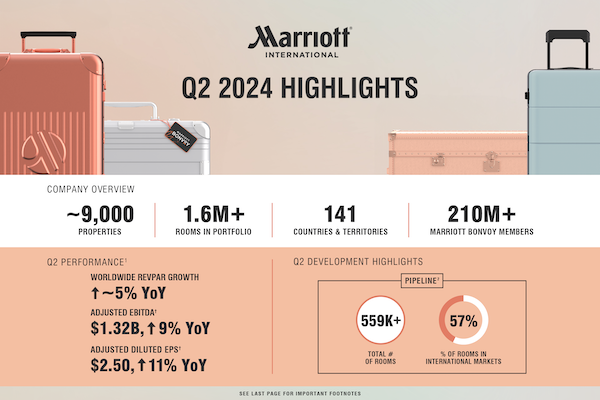
Fairly Developed
Marriott added approximately 15,500 net rooms to end the second quarter, expanding its worldwide room count to around 1.6 million rooms. Despite China’s torpid performance, Marriott recorded what it called record signings in APAC and Greater China for the first half of the year that led to a pipeline of almost 560,000 rooms globally. Capuano said the expectation for net rooms growth for full-year 2024 is 5.5% to 6%. “It’s really about the long-term prospects in China,” where, he said, Marriott signed 63 selects-service deals in the first half of the year with half of those expected to open within 12 months. “As we look at the pace, we asked the question, ‘Are we stacking paper or are we signing deals that are going to materialize as openings?’ The pace of construction is really encouraging.”
Still-elevated interest rates that have made the cost of capital high and new construction challenging have forced lodging companies to focus on conversions for growth. In the second quarter, conversions represented 37% of Marriott’s openings and 32% of signings. In June, Marriott signed three luxury conversion deals in the U.S.: the now Marriott-managed Resort at Pelican Hill in Newport Beach, Calif., which will become a St. Regis at a later date; the former Conrad Midtown in New York now The Luxury Collection Hotel Manhattan Midtown; and Turtle Bay Resort in Hawaii, now rebranded as The Ritz-Carlton O’ahu, Turtle Bay and owned by Host Hotels & Resorts.
Marriott committed key money to secure the Turtle Bay deal, reports said, and it’s something Capuano indirectly referred to on Marriott’s Q2 call with analysts. Key money, an up-front payment to an owner to secure a management franchise agreement, is typically deployed sparingly and only in specific circumstances when a lodging company truly covets a project. This usually means for deals that are in the upper-upscale to luxury chain scales, like Turtle Bay. Now, said Marriott CEO Anthony Capuano, the deployment of key money is changing some. Competition to secure deals through conversions is prompting lodging companies to put forth key money into what he referred to as “lower-quality tiers.”
“The environment is more competitive. For strategic deals and fee upside, we will consider leveraging our balance sheet. The bulk of key money is in upper upscale and luxury. We are now seeing need to deploy key money into lower-quality tiers,” he said, which can be construed to mean limited- and select-service hotels. Capuano did offer that the percentage of deals that necessitated key money on 2023 was is lower than in 2019.
Despite the concentration on conversions, construction starts are inching higher having risen 40% YOY in the U.S. and Canada for Marriott.
As Marriott signs and develops new properties, it’s also spending large on new technology. Oberg pointed out that Marriott would likely spend as much as $1.2 billion in 2024 on what is calls “investment spending,” inclusive of capital and technology expenditures, loan advances, contract acquisition costs and other investing activities. “Spending,” she said, “includes higher than historical investment in technology associated with the multiyear transformation of our property management reservations and loyalty systems, the vast majority of which is expected to be reimbursed over time.”
